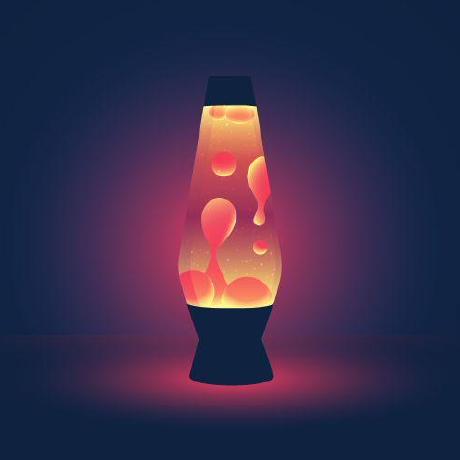From the article: OLED and MicroLED are the future
Now if I could just a “dumb” TV that doesn’t have a bunch of built in apps, which apparently is now a huge ask. I just want my TV to display whatever HDMI port is currently selected. Not nag me about connecting it to WiFi every time I turn it on.
Look into commercial displays. They are meant for store fronts and guest areas. These screens are typically built a bit more robust than consumer TVs. They may only have one of each input ports, may lack soundboard and built-in tuners, but they have sleeker designs and lack smartTV bloatware. You may need more peripheral equipment for the screen to function as a home use TV. Just do a little research and see if this works for your setup.
But then how would they get that sweet sweet metric data they can resell? Think of the megacorps!
and not spy on me
Can they please just bring back actual buttons instead of invisible tap points where you can’t tell where the fuck they are?
No. You’ll suffer the invisible tap points because they can advertise that feature and ship more units.
How do you fuck up televisions? It’s the simplest thing and these corporations just need to fucking meddle.
That’s great, it means LCD TVs have hit maturation point.
I have been reading about MicroLEDs for years now, never bought any OLED because of the burn-in. I’m curious when MicroLEDs will actually hit the mass-market and at what price-point and also how they will scale for smaller screens.
I’ve had my QD-OLED for a little while now and it has had quite a bit of static images on it without any trouble. From what I read before I bought it, OLEDs in general really don’t have a burn-in issue like the early models did.
From what I can tell they’re better than even plasma was at the end. And you’d have trouble actively trying to get permanent burn in on some later model plasmas. I used to service TVs and appliances. In most cases outside of using a plasma display for digital signage, I’d be able to run a swiping pattern for a little bit to get rid of the image retention. The only exception I really had for a plasma that was used in a residence was an older couple who didn’t have a widescreen source and only watched shows in 4:3 aspect ratio. They finally got the HD channels from their TV provider and realized they had the bars on the sides burned in (really the screen aged unevenly).
LCD TVs can still improve via faster refresh rates, strolling backlights, and smaller local dimming zones. If the last part can be made small enough, then it would be very hard to tell the difference between an LCD screen and a emissive display. These facts shouldn’t be ignored by display companies.
The problem is that we are reaching a point where it is cheaper to achieve the same or better results with OLED or microLED than by dumping even more money into improving LCD.
We are already at a point where OLED provides a straight up better value than LCD in higher end price brackets as long as peak brightness is not your #1 priority.
I’m going to have see a display that truly solves the burn-in problem before making that proclamation.
Dimming zones creat halo affects when there white next to black. Source: typing on my 12.9 iPad lcd with dimming zones.
The smaller the dimming zones, the lesser this effect becomes. Theoretically, you can have dimming zones of just 1 pixel in size. People have even “succeeded” in doing this by bonding two LCD panels together, with one acting as the local dimming solution.
I really hope microLED takes off in the near future. It’s basically OLED on steroids, all of its advantages without the risk of screen burn-in. It’s just too expensive right now…
What about Hisense with the U8H Class are they using microled(they call it miniled)? this Tv is not that expensive compared with other brands and tbh the image quality in the high-end models are awesome.
MicroLED requires each pixel to be its own light source (same with OLED). MiniLED is marketing for a fairly dense array of backlight zones on an LCD panel.
thanks for the info!
I am going to skip LCD tvs altogether. Right now I am still using my first hd tv, a Plasma TV from 2008, and when I replace it, it will likely be with an OLED.
OLED’s are just the way to go.
wow, this whole comments thread is just like reddit. love it, keep the faith ya’ll!!
Fair enough. LCD is very old technology at this point, dating back to the 1960s.
Of course, LEDs aren’t exactly new either, but microscopic LEDs bright enough to be used as pixels certainly are.
I’d love to have an OLED tv. I just need a good reason to get one. The tv I have now works just fine (unfortunately).
Man I’m still rocking my Samsung plasma TV from 2011. No need to heat the house with the amount that TV gives off but still works great.
deleted by creator
The OLED Switch rocks!
Aren’t MicroLED displays LCDs?
No, you’re thinking of LCDs with miniLED backlighting
I bought a QLED LCD 8k Samsung in 2019 and tbh it’s an incredible display because of its high nit count, local dimming zones and AI upscaler.
I’m a bit out of the loop, can these new technologies go to that resolution yet?
That’s incredible! Is there a noticeable difference between 4k and 8k? What do you use it for?
Primarily gaming but also anything looks astounding on it above 1080p, lower resolutions than that though aren’t upscaled great but I never watch content that low res anyway. Refuse to. Mines using LED backlights too, since then Samsung have released Neo-QLED that is even better and brighter than mine.
Honestly on my TV lights look real, headlights on cars, the sun, torches, flames all look like it’s just a pane of glass in front of me. Almost blinds you, never had that experience with a TV previously. To me it’s better than cinema screens.
Brightness in terms of nits is really important, and something the OLED diehard fans don’t seem to appreciate. I get the blacks too with the local dimming yeah not as good as OLED but close enough for me not to care.
I knew about OLED but I wanted the pinnacle of a tried and tested technology over something new.
Do they still get burn in? that was my only problem with non-LCD TVs.
No, they still get burn in. They also aren’t very bright out of the box, and they get dimmer over time. They’re also more expensive than LCDs despite having a limited lifespan. I’ve never been a fan of OLEDs for these reasons and my theory is that manufacturers want to sell them because they have a limited life span so they can sell more.
MicroLED I’m super pumped for though. No clue when we can actually expect to buy them though.














